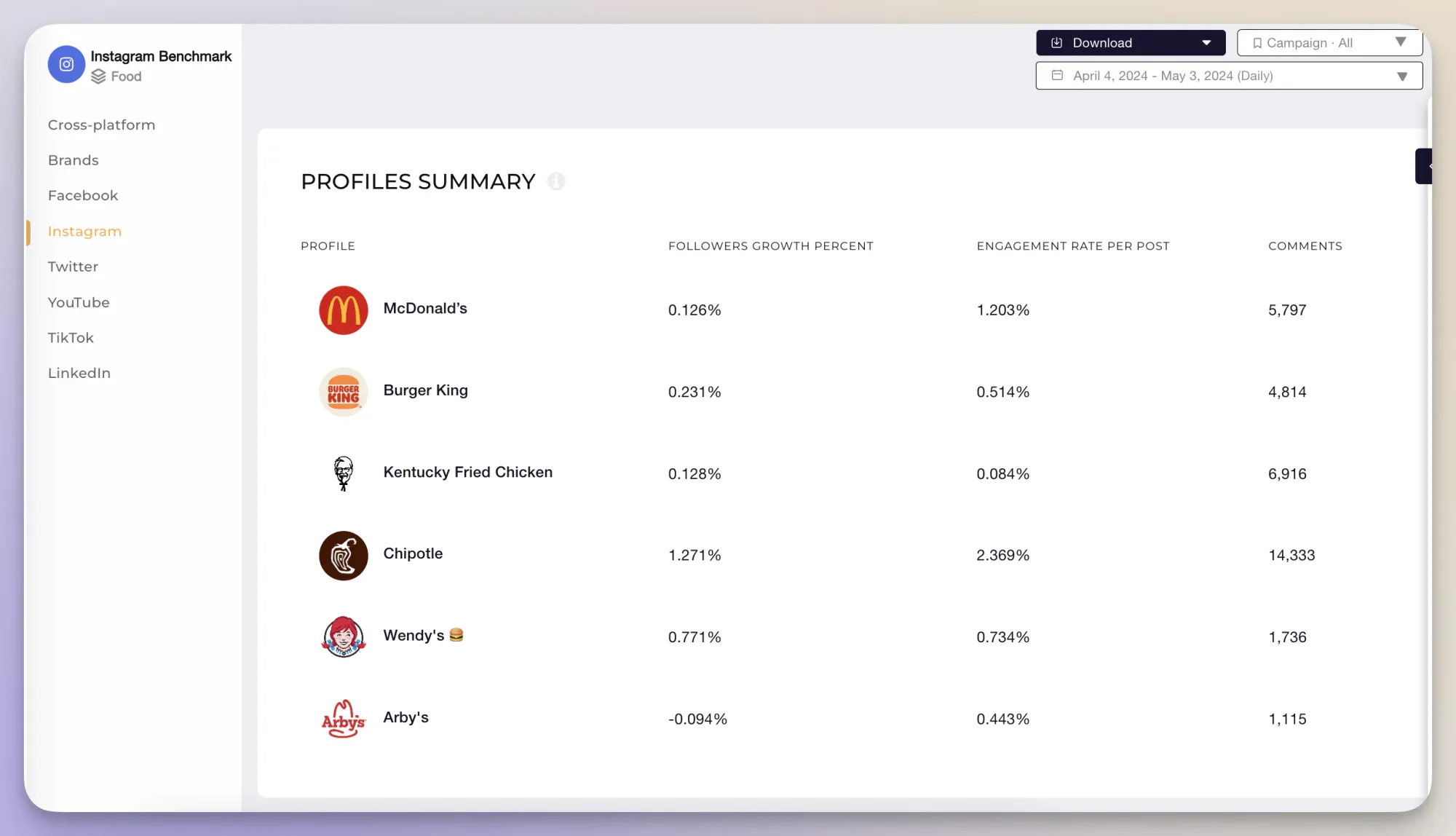Social media marketing can be a game-changer for businesses, but it can also feel like a maze with so many platforms and outcomes to focus on.
The key to a successful path? Clear social media goals.
Social media marketing goals bring focus to promotional efforts, ensuring that resources are well spent and stakeholders are happy with the results.
This article will teach you everything you need to know about social media objectives and how to create them, regardless of industry or type of business.
With this foundation, you'll be ready to create a powerful and streamlined social media strategy.
What are social media goals?
Why SMART social media goals matter for your strategy
9 Social media SMART goals examples and KPIs to track them
How to set social media goals
FAQs about social media goals
What are social media goals?
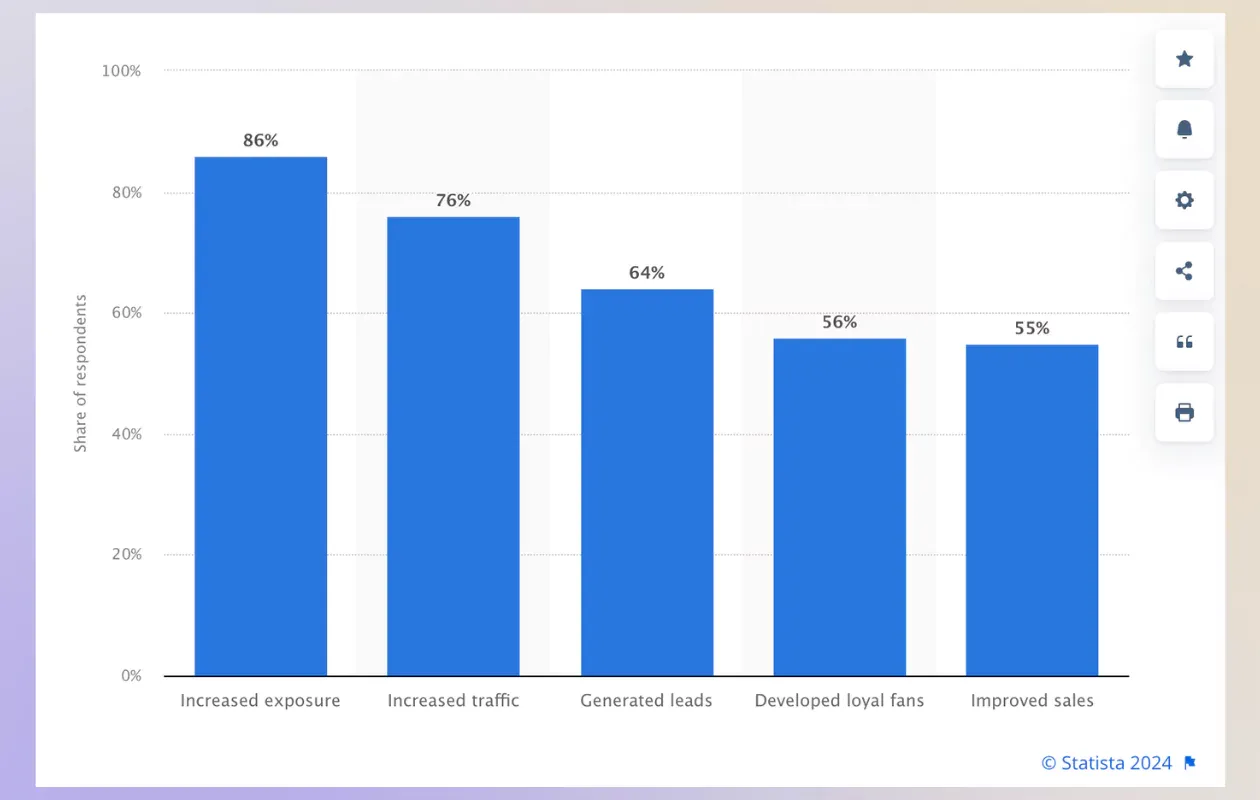
Good social media goals drive the effectiveness of your marketing strategy. They ensure your team is not just throwing content out there but thinking strategically and acting with a clear direction in mind.
Think of your social media marketing efforts as a puzzle. Strategic goals are the overall picture that helps you put the pieces together so the result makes sense.
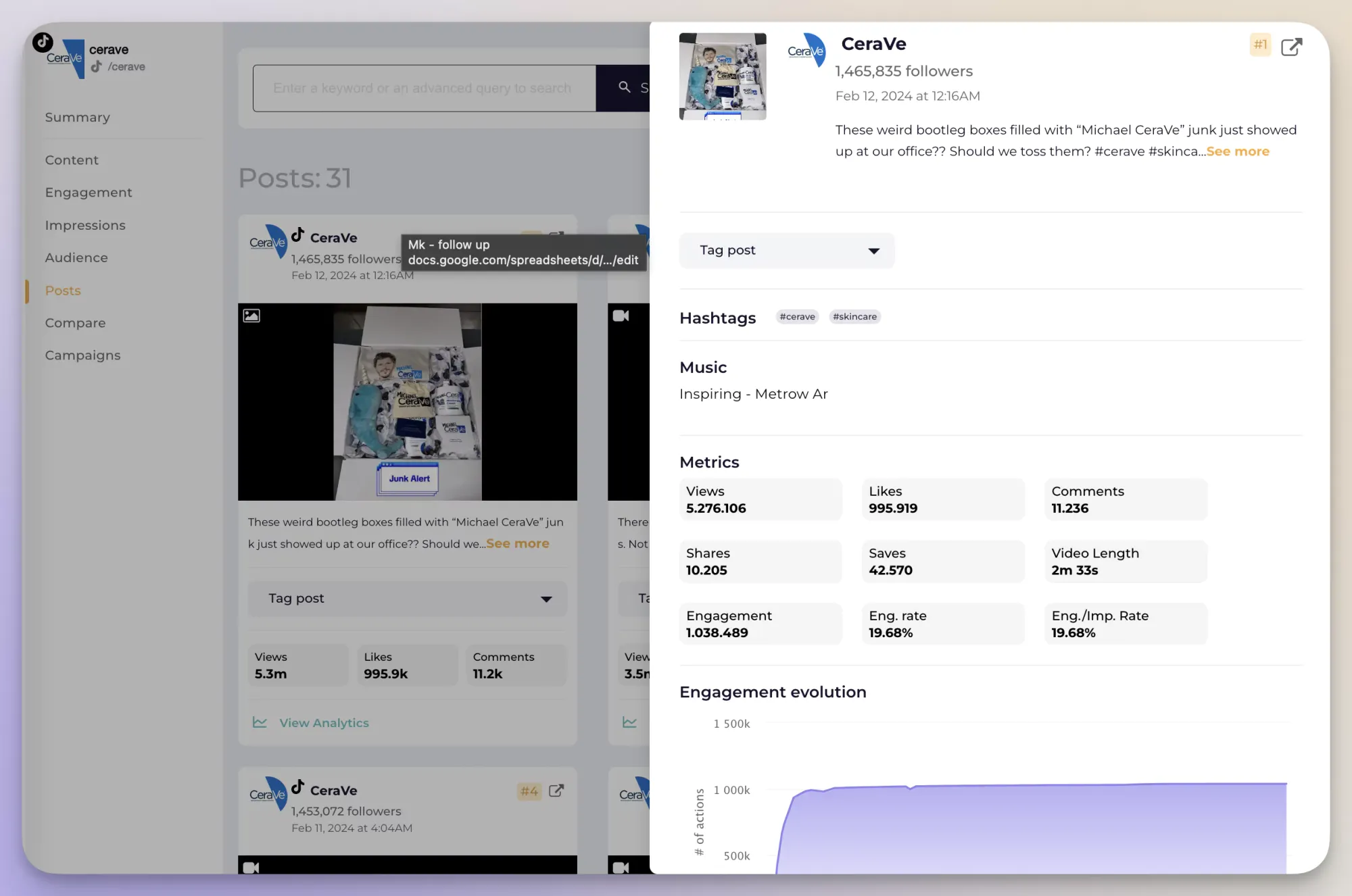
Track and measure your social media performance
Measure the metrics that matter and beat the competition with Socialinsider.
Why SMART social media goals matter for your strategy
Set SMART goals for social media marketing to avoid being vague or unclear.
SMART (Specific, Measurable, Achievable, Relevant, and Time-bound) goals are essential for social media success.
Here's why:
- Clear direction. SMART goals spell out what you want to achieve. For example, replace "increase brand awareness" with "increase website traffic from social media by 30% in the next quarter." This clarity allows you to take specific actions that support that objective.
- Realistic goals. While you want to push your team to get the best results, setting goals that are out of reach will lead to frustration. When you set SMART goals, you consider your resources, ensuring your social media targets are ambitious yet achievable.
- Aligned objectives. SMART social media targets align with your overall marketing strategy, making them relevant to your specific business goals.
- Timely achievements. SMART goals have deadlines. Time-bound social media goals, like "grow our Instagram followers by 5,000 within the next 6 months," create a sense of urgency and keep everyone accountable.
- Continuous optimization. SMART goals enable you to assess your performance by following social media KPIs with the help of social media analytics tools. With access to clear data, you can identify areas for improvement and refine your strategy.
Because your goals are so specific, they’re easier to plan for and achieve. It’s also easier to track the effectiveness of your strategy when you’re working with more information, so always be SMART with your social media marketing objectives.
Want more clarity about how to set these goals?
Let’s look at some social media marketing objectives examples and how to measure them.
9 Social media SMART goals examples
1. Increase brand awareness
2. Boost website traffic
3. Generate quality leads
4. Increase engagement
5. Grow social media following
6. Improve customer service
7. Enhance brand reputation
8. Boost conversions and sales
9. Gain valuable business insights through social listening
Social media offers many opportunities to grow your business. A common mistake is to try to do everything at once. That can quickly lead to wasting resources and not really achieving anything. Choose goals wisely and focus on a few at a time.
Here are 9 common social media goals that make a big difference for most businesses, plus social media metrics to help you track and measure results:
1. Increase brand awareness
Brand awareness helps your business reach new people and, as a result, get more customers. It’s no wonder that 70% of social media marketers have brand awareness as one of their primary social media goals.
Metrics to monitor regularly to measure brand awareness are:
- Follower growth. A constant growth rate means you're sharing content that resonates with your audience and attracts new followers.
- Reach. This metric reflects the number of people who see your posts, even if they don't follow you yet. A wider reach means your message is spreading further, increasing brand awareness.
- Impressions. This metric counts how many times your content appears on social media feeds, whether people interact with it or not. A high number of impressions means that your content is gaining visibility.
- Brand mentions. This goes beyond looking at your own branded content. Track how often people mention your brand in their own social media posts to see how conversation-worthy your products and services are.
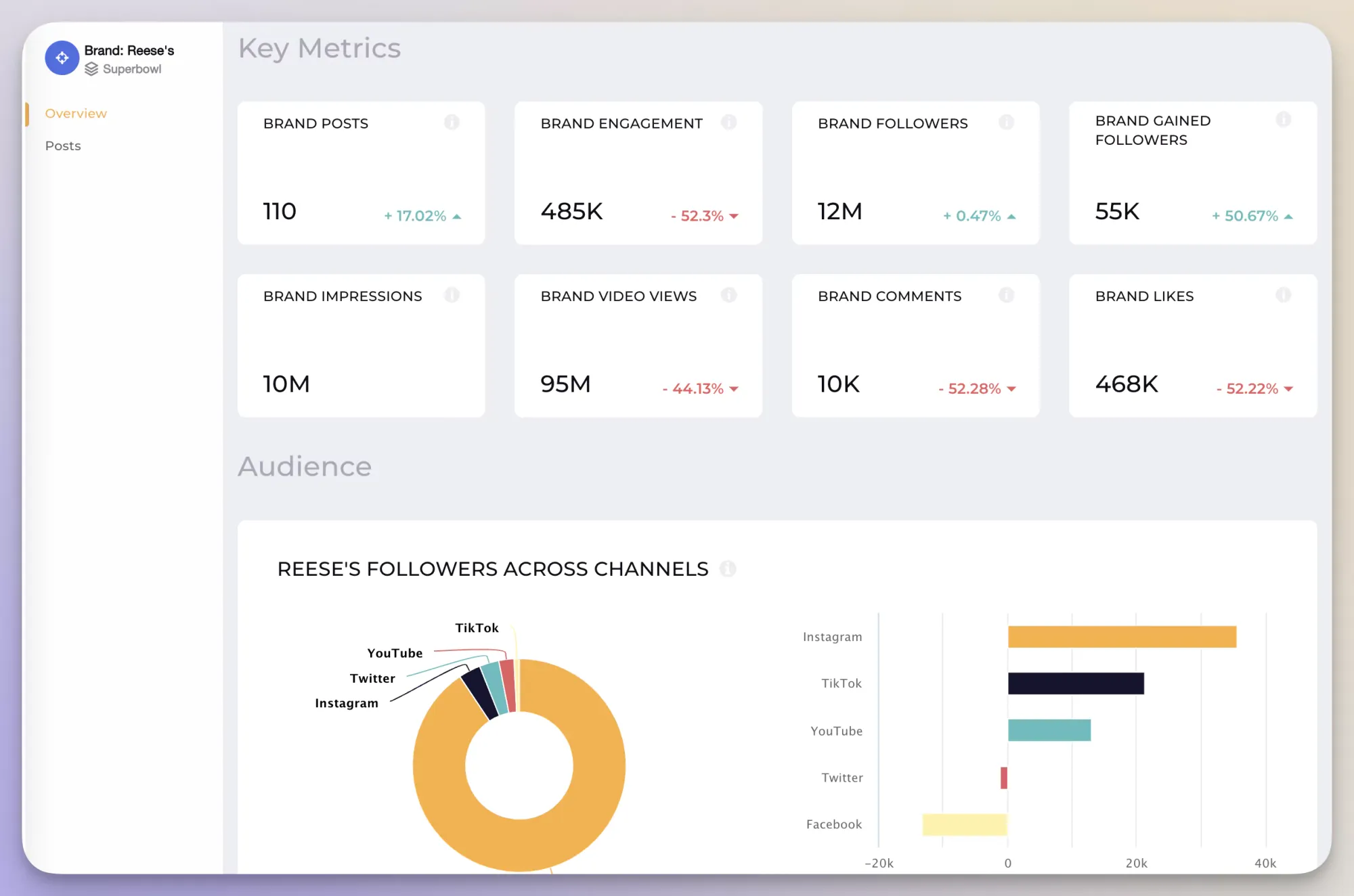
2. Boost website traffic
Social media isn't just about likes and comments. It's a powerful tool to drive traffic to your website, where people can learn more about your offerings and become customers.
87% of marketers list increased website traffic as a top benefit from social media marketing, so let's see what metrics to track to understand how your social media activity is impacting website traffic.
- Click-Through Rates (CTR). This metric shows how often people who see your social media posts actually click on the links that lead them to your website. A high CTR means that your content is engaging, while a low one could signal that you need to optimize your content and CTAs to spark more curiosity.
- Website referral traffic. Look at website analytics to measure the total number of visitors who come to your website from social media platforms. See which social media platforms are sending the most traffic and where your efforts might not be paying off.
- Engagement rate. This measures various actions on your social media posts, such as likes, comments, shares, and clicks. A high engagement rate means your content is relevant to your audience and is more likely to get clicks.
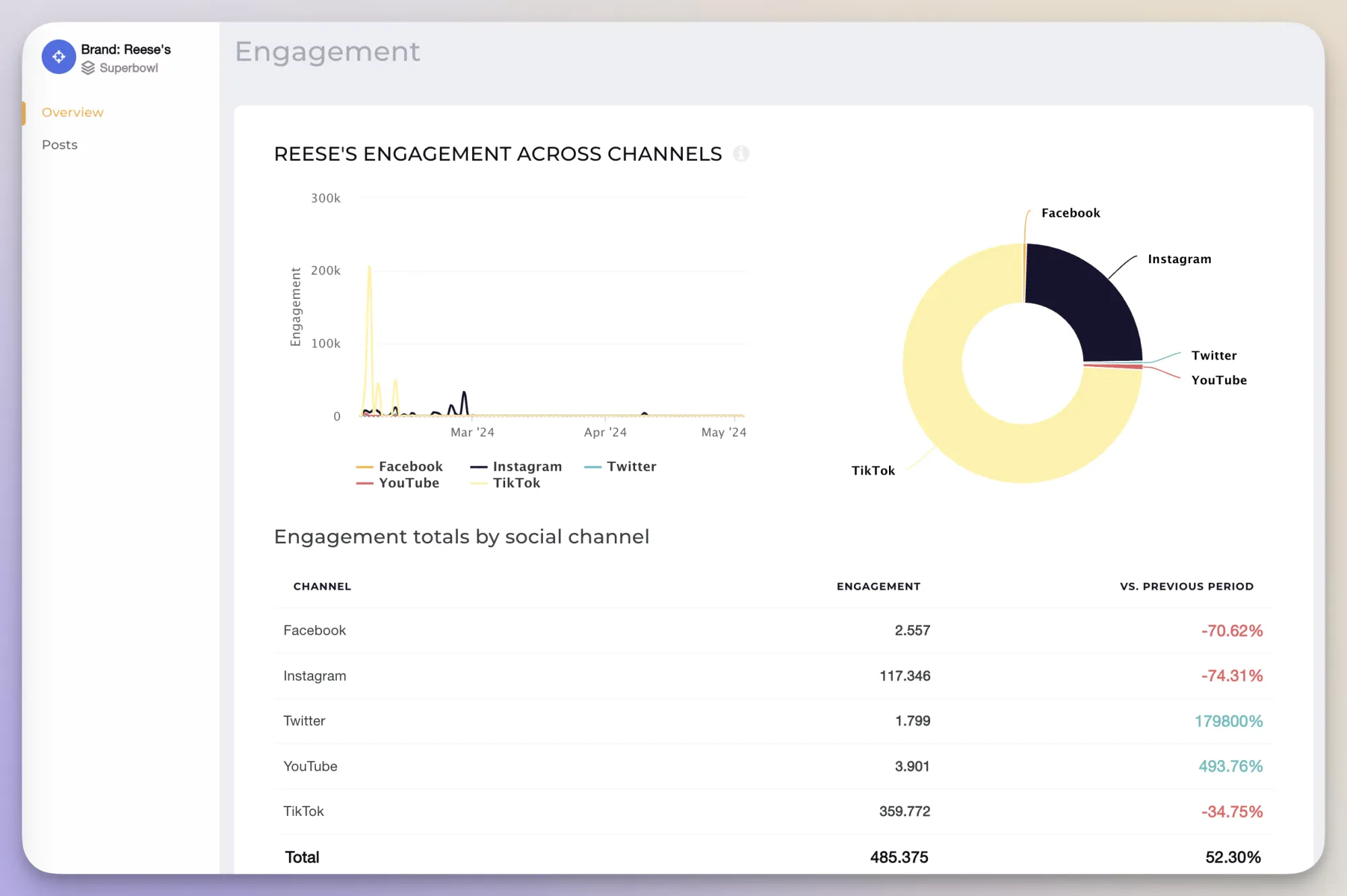
With Socialinsider, you can drill down into social media analytics to understand how your brand performs on different social media channels and decide where you need to improve or where your budget is best spent.
3. Generate quality leads
Social media strategy goals almost always include generating leads for the business. After all, brands survive and grow only if they manage to engage customers and ultimately convince them to buy.
Social media platforms offer various tools for generating leads, from dedicated forms to targeted campaigns and direct chat features.
It’s good to know that different channels are more fit for lead generation, depending on the business type.
For example, LinkedIn is more suitable for B2B businesses, while Instagram works better for B2C brands. Keep an eye on social media benchmarks to understand what works best for different types of businesses and industries.
Track the following metrics consistently to measure lead generation:
- Lead form submissions. Social media platforms such as Facebook or LinkedIn let marketers create lead-generation forms. Track submissions to measure how many potential customers filled out your lead capture forms and understand what works and what needs optimization.
- Click-Through Rate (CTR). Track how often users click on links in your social media posts that lead them to landing pages with downloadable content or offers.
- Direct messages. Many brands leverage social media for customer support and in-chat paid ads. Monitor the number of requests received through direct messages on social media and also the CTR for any links or offers you send through paid campaigns.

4. Increase engagement
Given that social media platforms were created to foster connections with audiences, engagement is a common goal in digital marketing strategies.
Any kind of interaction your brand gets on social media, including likes, shares, and comments, can be considered engagement.
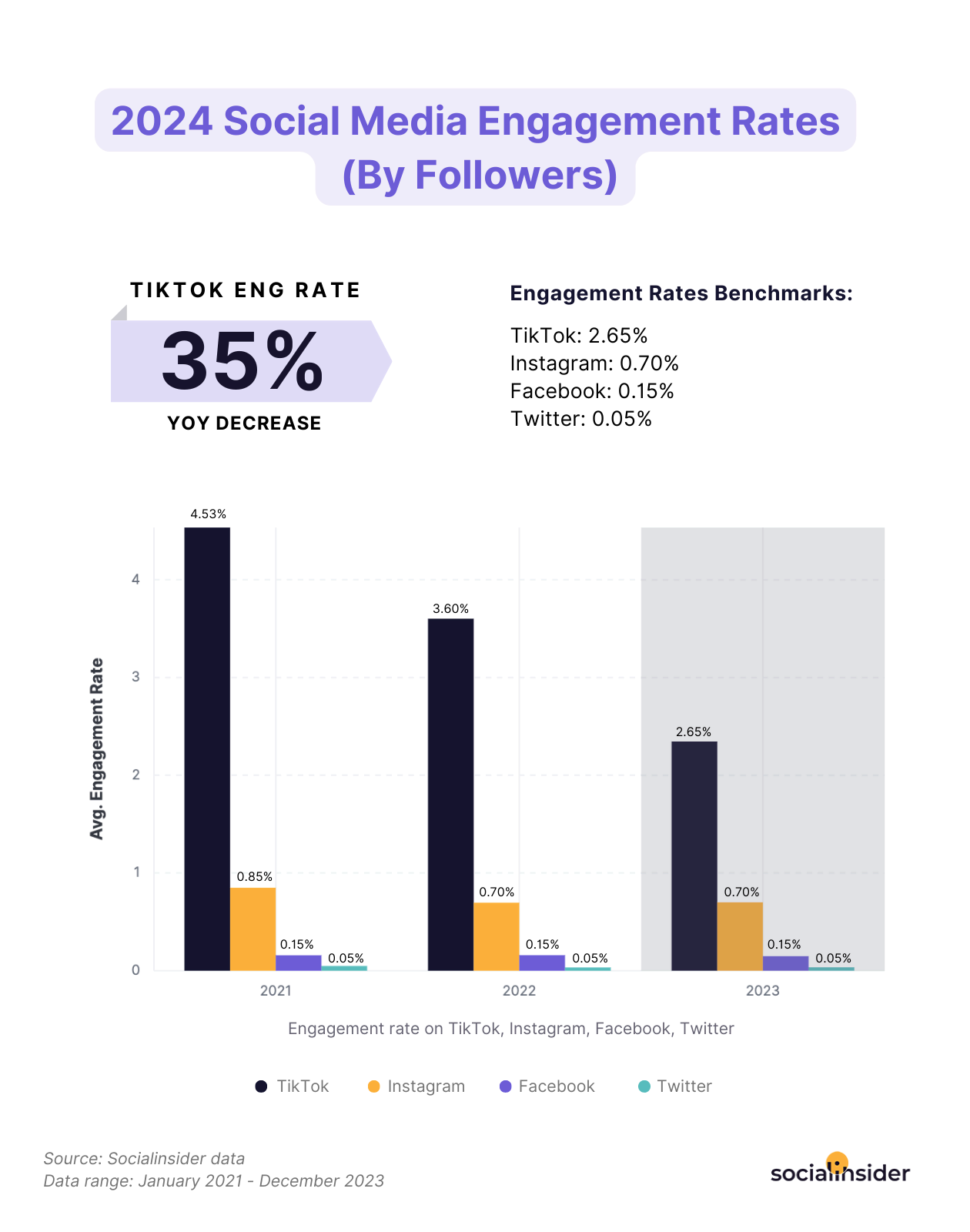
While engagement may be perceived as a vanity metric, it is as a powerful tool to foster a genuine connection with your audience.
Key metrics to keep an eye on are:
- Comments, shares, and likes. Measure the interaction your social media content gets. This reflects the engagement and reach of your posts.
- Engagement rate. Monitor the percentage of people who interact with your content after they see it, as well as the rate at which they do so. This metric tells you how valuable your content is to your audience.
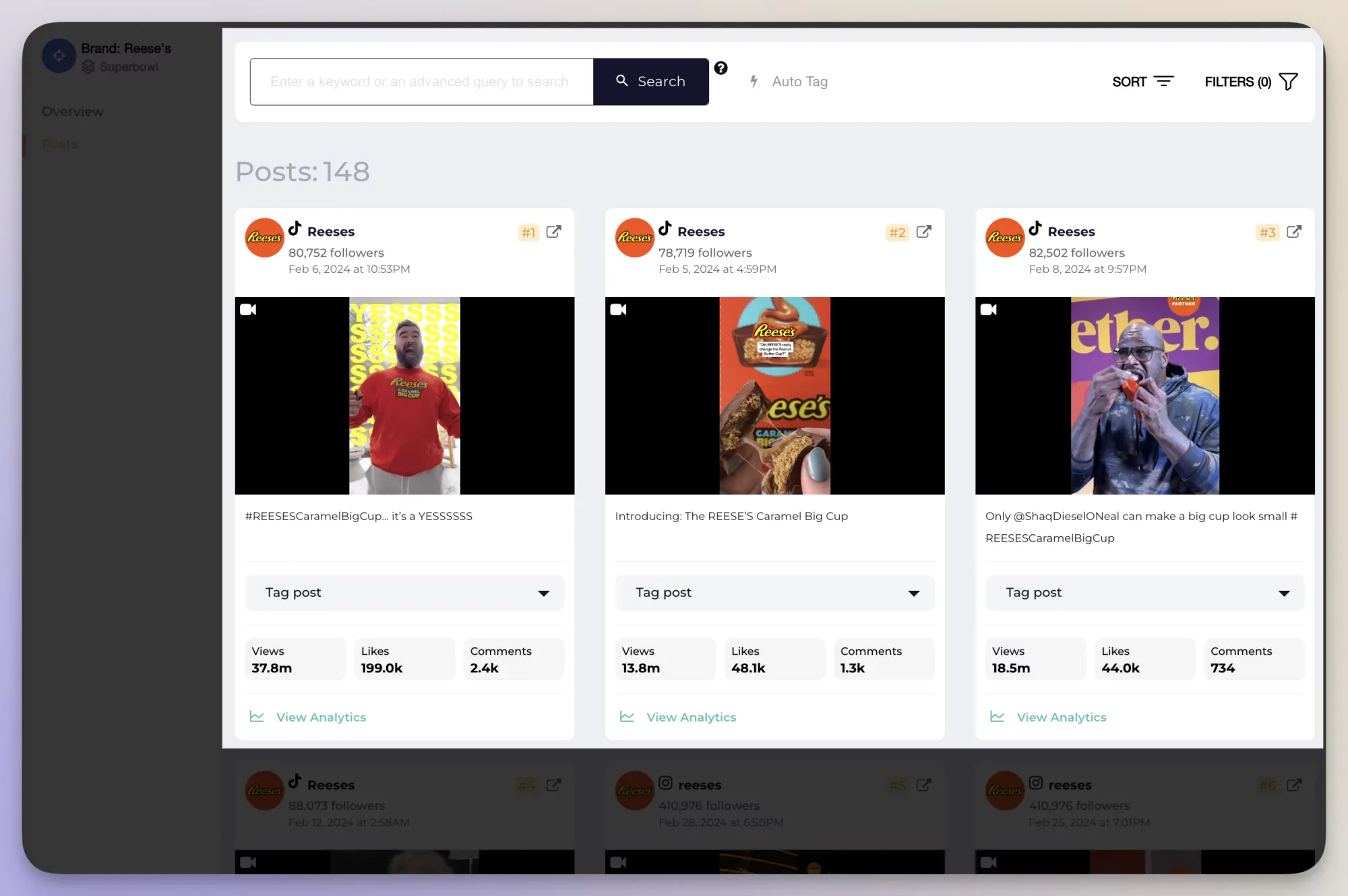
- Brand mentions. While indirect because they may not happen directly on your social media pages, the mentions your brand gets are indicative of how good you are at sparking conversations and getting people to engage with your offerings.
You can also track metrics that are specific to certain platforms, such as:
- Reposts/retweets (X (Twitter), LinkedIn). This metric measures how often your content is reshared or quoted by other users, expanding your reach and encouraging conversations.
- Saves or Story/Reel replies (Instagram, Facebook). Saves show that users find your content useful enough to revisit it later, while replies, similar to comments, demonstrate that people want to interact with you directly.
Try this free calculator.
5. Grow social media following
Having a large social media following can contribute to building a strong community around your brand if it's coupled with engagement.
Expanding your audience reach on relevant platforms can also support other social media goals, such as increased brand awareness, enhanced credibility, stronger engagement, and improved lead generation potential.
Here are some KPIs to help you track your progress towards this goal:
- Follower growth rate. This metric tracks the rate at which your follower count is increasing or decreasing over time. Aim for a steady or accelerating growth rate.
- Reach. This KPI measures the total number of people who see your social media content.
- Impressions. As explained above, this tracks how many times your content appears on social media feeds, even if users don't interact with it.
- Source of new followers. Analyze where your new followers are coming from, such as organic reach, paid social media campaigns, or referrals from existing followers.
- Influencer analytics. Collaborations with relevant influencers can be a great way to support social media objectives and to increase your followers on social media.
6. Improve customer service
Given people's increasing reliance on communication through social media, more and more marketers set up goals to improve customer support on social media.
Excellent customer service is one of the best social media marketing practices to improve customer satisfaction and retention, boost sales, and increase customer loyalty.
Metrics that should be monitored are:
- Customer satisfaction rating. Track the feedback that your customer satisfaction efforts receive to ensure customers are happy and their problems are solved.
- Response time. Monitor the time it takes for your customer service team to respond to customers' messages and inquiries.
- Resolution rate. Keep an eye on how many customers are successfully helped, as this indicates the efficiency and effectiveness of your customer support team.
7. Enhance brand reputation
Social media can help you cultivate a positive online image. Your brand reputation is paramount in establishing yourself as a trustworthy brand, which will ultimately impact sales, talent acquisition, and brand success.
In order to measure brand reputation in social media, keep an eye on these metrics:
- Brand mentions. Track how often people mention your brand on social media platforms.
- Brand sentiment analysis. The number of mentions counts, but you also need to understand if social media conversations surrounding your brand are positive or negative. Socialinsider helps you measure the overall brand sentiment on social media in real-time so you can act accordingly and keep going or adjust strategies.
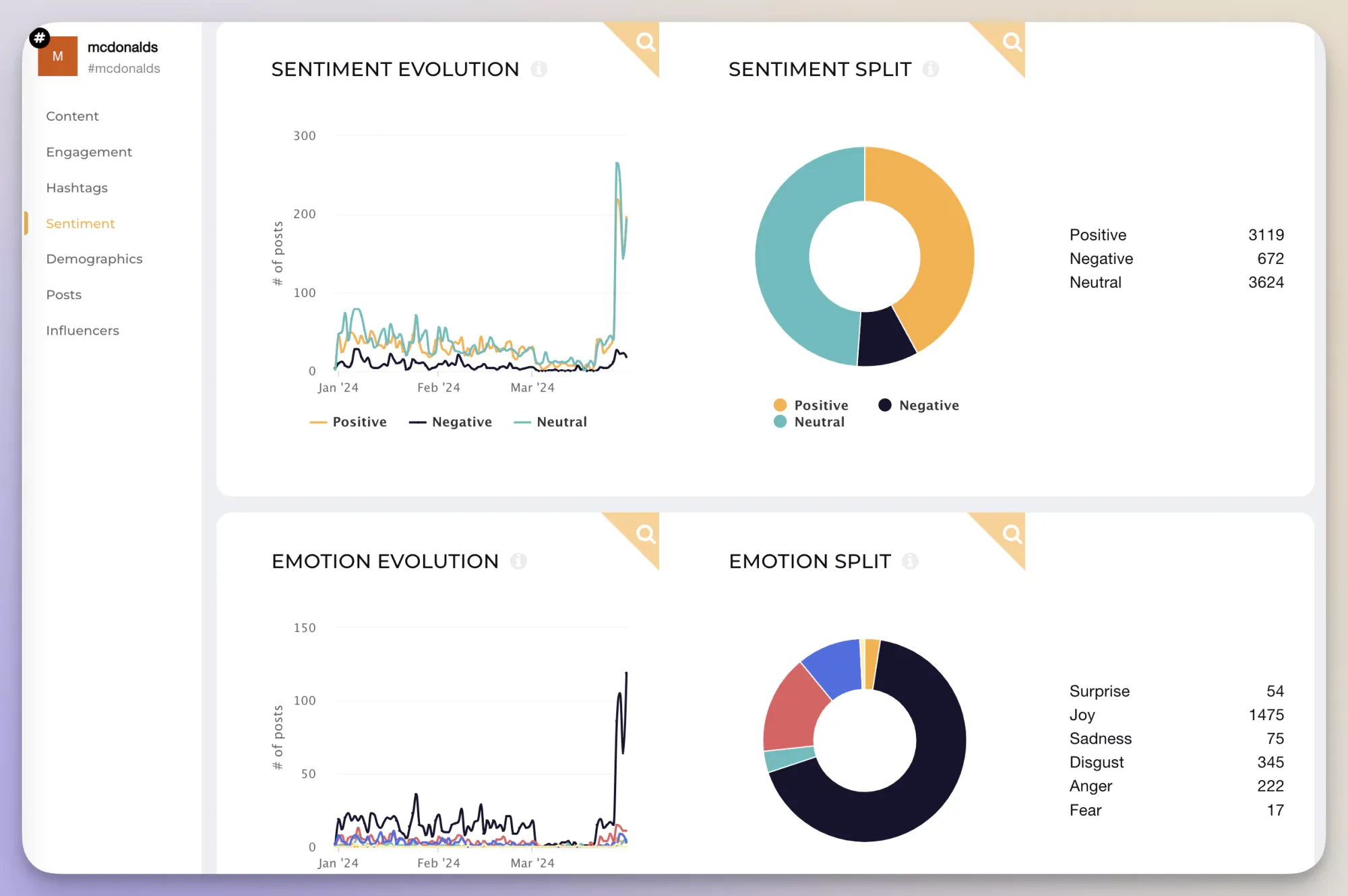
8. Boost conversions and sales
With well-planned social media goals, you can grow revenue indirectly or directly through increased conversions and sales.
Here’s how to understand how much revenue social media is generating:
- Conversion rate. As explained before, this measures the percentage of social media users who take a desired action after seeing your content or ad.
- Click-Through Rate (CTR). Track how often followers click on links within social media posts or ads that lead them directly to your landing pages.
- Website traffic from social media. This helps you understand which social media channels are most effective at driving potential customers to your website.
- Social media revenue. Measure the revenue your social media advertising is generating. Learn how to calculate social media ROI to understand how well social media is performing and whether you need to make adjustments.
9. Gain valuable business insights through social listening
Leverage social media insights to gather valuable information about your target audience, competitors, and industry trends, which you can use to make better, data-driven decisions.
Social listening allows you to actively monitor and analyze online conversations relevant to your brand. By understanding what people are saying and how your competitors are doing, you can not only achieve social media goals but improve various aspects across your business.
Here’s what to track for successful social listening:
- Brand mentions. As shown above, this metric tells you how many people are talking about your brand. Coupled with brand sentiment analysis, you can get a clear picture of how people feel about your products and services.
- Performance of relevant hashtags. Monitor any hashtags related to your brand and industry to see what your target audience is talking about. By knowing what your audience is saying, you can learn a lot about their pain points and wants.
- Competitor metrics. Run a social media competitor analysis to identify relevant topics, strategies that work, or gaps that you can explore. Explore the same metrics you would for your brand, including reach, engagement, impressions, and follower growth on different platforms.
How to set social media goals
1. Understand overall marketing goals
2. Define SMART social media goals
3. Track and analyze
4. Adjust social media objectives
Ready to set goals for social media marketing like a pro?
Below are the key steps to achieve smarter social media goals.
1. Understand overall marketing goals
Social media goals for businesses should align with overall marketing goals.
What are your broader marketing objectives?
Do you want to increase brand awareness, generate leads, boost sales, or improve customer service?
Understanding your strategic goals will guide your strategy and help you set up relevant social media targets.
Exploring benchmarks data for specific platform, such as Instagram or TikTok, can help better understand the current marketing climate in your industry and develop better, more realistic goals for your brand.
2. Define SMART social media goals
Translate those broad goals into specific, realistic goals for social media. Remember the SMART framework we already described above.
Here are social media marketing objectives examples for inspiration:
- Increase brand awareness by 25% in Q1 through engaging Instagram content
- Improve customer satisfaction score by 10% within 6 months through social media direct messages
- Drive a 25% increase in website traffic from Facebook and Instagram in the next quarter through influencer marketing
- Generate 50 qualified leads per month from LinkedIn through lead-generation forms
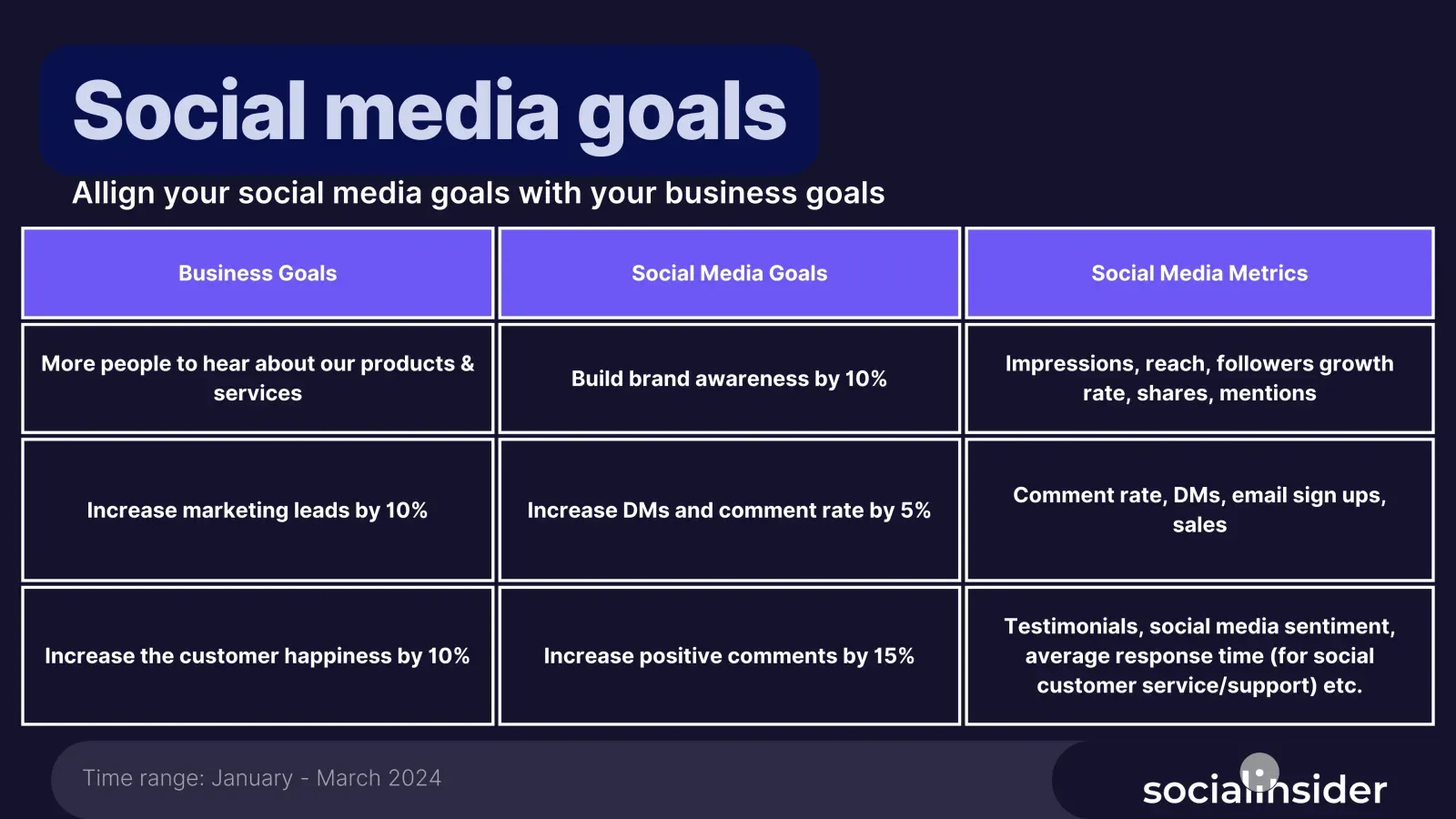
3. Track and analyze
Monitor KPIs regularly using the data available within social media platforms or leverage social media analytics tools like Socialinsider for a more comprehensive view of results, visually appealing dashboards, and real-time competitive insights.
Analyze the data to see what's working and what needs improvement. Create actionable plans to implement improvements and test new ideas.
And speaking of data, if you're thinking about jumping on the cool kids' train and leverage TikTok marketing, here's a detailed list of the top TikTok metrics you should track!
4. Adjust social media objectives
Revisit social media marketing goals periodically to reassess their relevance. As business and marketing objectives evolve, so should your social media strategy and tactics.
Now that you know how to set social media goals and have the tools to make decisions based on data, adjusting targets periodically should become a pleasant part of your marketing routine.
Final thoughts
By following the steps and strategies described in this article, you are ready to set SMART social media goals that drive measurable results and help you boost your social media ROI.
Remember, no one has all the answers, but successful marketers have access to data.
Socialinsider supports you with advanced social media analytics and insights, so if you're in the process of defining social media objectives, try it for free and get a (virtual) helping hand.
FAQs about social media goals
How are social media metrics and social media goals related?
Social media goals are measured through social media metrics. These key performance indicators are collected from the different social media platforms and are based on aggregated user data. Social media metrics are essential to understanding how well your social media strategy performs.
How do you set social media goals for Instagram?
Setting social media goals for Instagram is a systematic process similar to the one used for any other social media platform. First, identify marketing objectives. Then, track your Instagram metrics to analyze your current performance. Next, pinpoint the most important and relevant metrics. Finally, track metrics, measure results, and adjust goals periodically.


